In late February, UK news organisations began reporting on the early effects of the COVID-19 pandemic spreading across Europe, taking place most drastically in northern Italy. These reports showed deserted Italian streets and people taking refuge inside, with only few venturing out for indispensable supplies – giving a taster of what would soon come to pass in the UK and elsewhere. A few weeks later, against this bleak backdrop, another phenomenon emerged, one which showcased the resilience and creativity of children and their families: homemade signs proclaiming ‘Andrà tutto bene’ (All will be well), accompanied with the hopeful image of a rainbow, hanging from balcony railings and windows in towns and cities across the country.
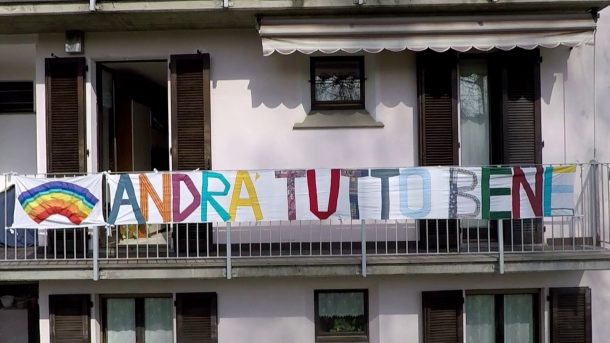
The phrase ‘Andrà tutto bene’ entered the country’s consiousness in early March, when handwritten post-it notes with the phrase mysteriously began appearing on front doors in the Lombardy region – a clandestine act to brighten the spirits of troubled citizens. Soon after, a group of families in southern Italy encouraged their children to craft signs using the same phrase with added rainbows. When photos of these signs were shared online and in the news, the practice quickly became a national phenomenon before spreading to other countries around the world, including to the UK. What started as a modest activity to bring some cheer, resulted in an international movement of incredible force: Hundreds of thousands of signs made by children over the course of several months, representing an outpouring of empathy at an unprecedented scale for this new and difficult time we faced together.

Over in the UK, as the inevitable lockdown materialised, and children were separated from their friends in nursery and school and sequestered to their homes, solutions had to be formed for home schooling, to nourish creative acts and to keep a sense of wellbeing. By mid-March, encouraged by virtual sessions with teachers and in their home by their parents, and taking cues from what was happening in Italy, children across the UK began crafting rainbow images of their own to hang in their windows. Making the signs was meant to bring peace of mind to the children making them, but they were also designed to communicate and bring cheer to people walking outside. The phrase ‘All Will Be Well’ wasn’t used so much in the UK, but instead messages focused on supporting the NHS and key workers.
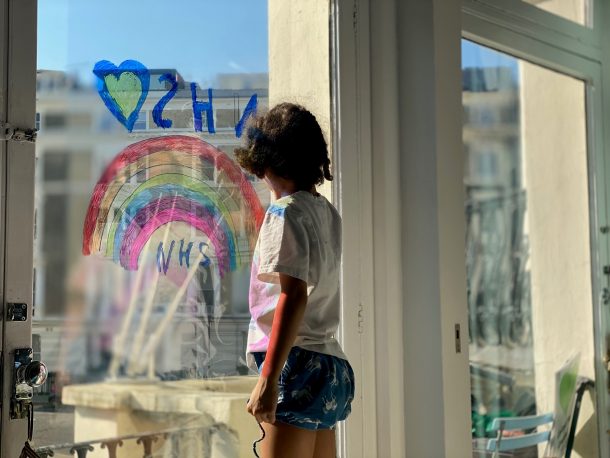
The use of rainbows here has been interesting on multiple levels. Rainbows have been symbols of hope and wonder throughout history and world mythologies, with legends and beliefs from different societies created to explain their beauty. In Greek Mythology, Iris, messenger of the gods, travelled on rainbows from Olympia to give messages to mortals. In Navajo tradition, the rainbow is the path of holy spirits, frequently depicted in sacred sand paintings, which are produced in ceremonies for healing purposes and destroyed afterwards. Both the ancient Sumerian Epic of Gilgamesh and the Old Testament’s Book of Genesis describe a rainbow appearing at the moment that the great flood recedes allowing an ark to finally dock with its cargo of people and animals. Irish legend has it that reaching the end of a rainbow will lead to a pot of gold guarded by a leprechaun.
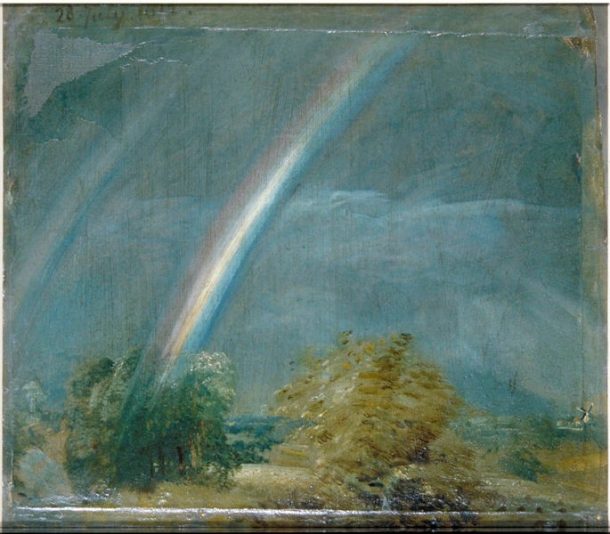
328-1888)
Over the centuries these myths and legends percolated throughout culture. Western art, in the era of Romanticism towards the end of the 18th century and throughout the 19th century, was dominated by landscape painting with artists of that time like John Constable and JMW Turner often exploring the magical light effects of rainbows in their works. In the 20th and 21st century, artist Ugo Rondinone explored rainbows in ‘Vocabulary of Solitude’ and his ‘Rainbow Poems’ series, which included enigmatic phrases about shared experience in public space. With these giant rainbow-coloured phrases Rondinone, as a gay artist, was drawing on the more recent symbolic history of the rainbow as a flag designed by Gilbert Baker in 1978 as a symbol to unify LGBTQ people around the world. Rondinone’s work from the 1999 Istanbul Biennale, recreated in 2017, with the phrase ‘Where Do We Go From Here?’ feels particularly prescient right now.
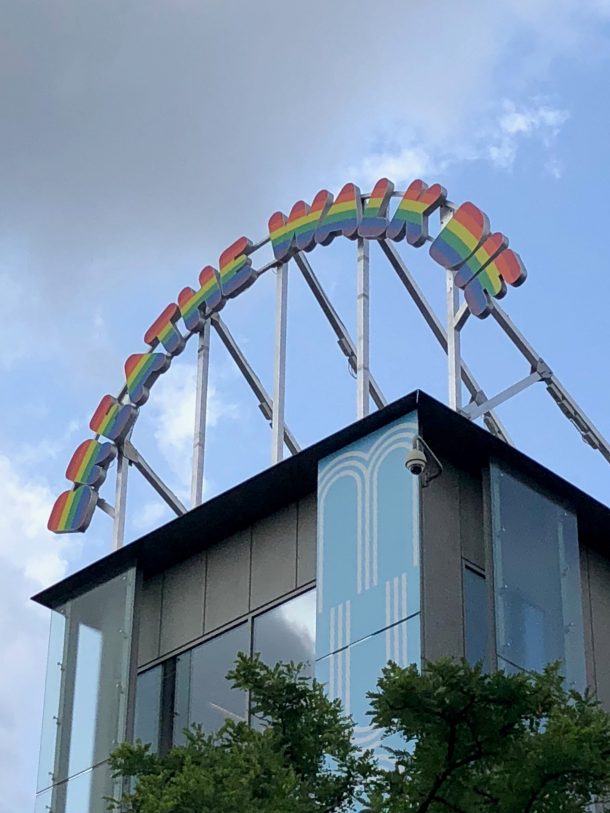
In popular culture the rainbow has featured heavily in film, TV and mass production throughout the 20th century as a symbol of longing and hopefulness. Major moments in pop culture include Dorothy singing ‘Somewhere Over the Rainbow” in 1939’s The Wizard of Oz, and Kermit the Frog singing ‘Rainbow Connection’ 40 years later in 1979’s The Muppet Movie. In April 2020, he would reprise this in a new version for social media bringing new fans to the classic song that held such a resonance to children’s creative endeavours during the lockdown period. These titans of pop culture are represented in the V&A’s children’s product collections alongside other brightly coloured optimistic rainbows, from 19th century educational board games to a 1980s Cheer Bear Care Bear.
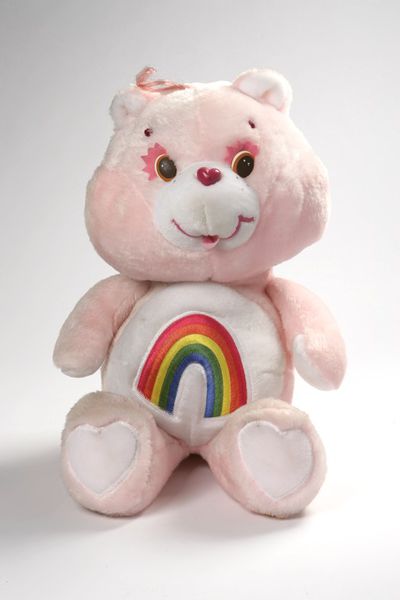
B.1479-1999)
For the V&A Museum of Childhood, the making of rainbows under lockdown struck us as a hugely important and symbolic act that we were keen to collect and preserve in our archives for future generations to see. So, despite the challenges of furlough and lockdown, in early May we put out a call to the public for children to submit works they had created during this period, so that we could collect the creative evidence of this historic happening. We received an overwhelming response: over a thousand emails with images of how children from up and down the country and worldwide were interpreting the rainbow motif in diverse ways using a wide variety of materials at hand. After whittling down the submissions to what was most easily collectible and preserved, we ended up with over hundred works that will now go into the permanent collection.
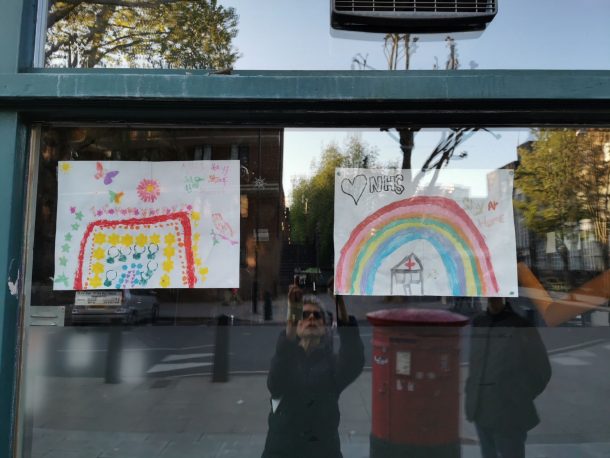
As the UK exits a second lockdown, while the world teeters towards implementing vaccines, what does this collection say about the dreadful moment that we are collectively passing through? It reflects on the importance of children’s voices being heard in the public sphere and the optimism and empathy that this situation has facilitated for communities across the UK to share. Much like another recent acquisition by the Museum of Childhood, 2019’s protest signs against government stasis in the face of global heating created by children with the Extinction Rebellion Families Group, this collection reflects on how art and creativity can empower children and young people, and that the collective use of graphic symbols can embolden a message. Alongside their rainbow artworks, many children of the UK sent out a clear and powerful statement – that we must protect the institution of the National Health Service, and its workers. This is a very clearly, strongly felt, and surprisingly political point made by children across the UK, bolstered through a shared graphic symbolism in a similar way that online memes work. It is a mass collective endorsement of a healthcare system that is sometimes depreciated but mostly highly regarded around the world. The rainbow artwork phenomenon, and its backing of the NHS, is an inspiring sign that in the power of creativity, children can see a way to make themselves heard.
A selection the children’s rainbows made during lockdown collected by the museum is now on view at the Victoria and Albert Museum in South Kensington in an exhibition called ‘All Will Be Well’. (3 Dec 2020 – 21 Feb 2021)
You can view the archive digitally here.
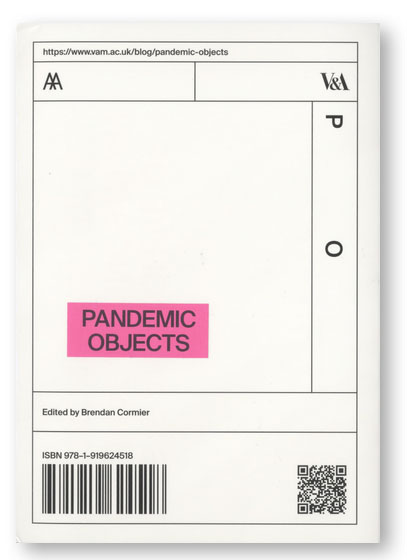




I think an object that I will remember is more metaphysical: just people being allowed to be sad without thinking of it as being a failure in itself. Ignoring sadness is like ignoring happiness. The advert that used to say that Heineken reaches the parts that other drinks do not reach could be remade as sad songs. I know this museum is not a musical one but perhaps YouTube should be an object as it generates new songs for me to listen to which reflect my need for sad songs and religious songs from all faiths. Perhaps faith is the new object that we have turned to the most and it is hard to picture faith and hard to display it without controversy. I visit a brook next to a church that is empty and that is the most profound place that I find to go to to experience the pandemic in its quietest and most reflective: figuratively in the streams water.